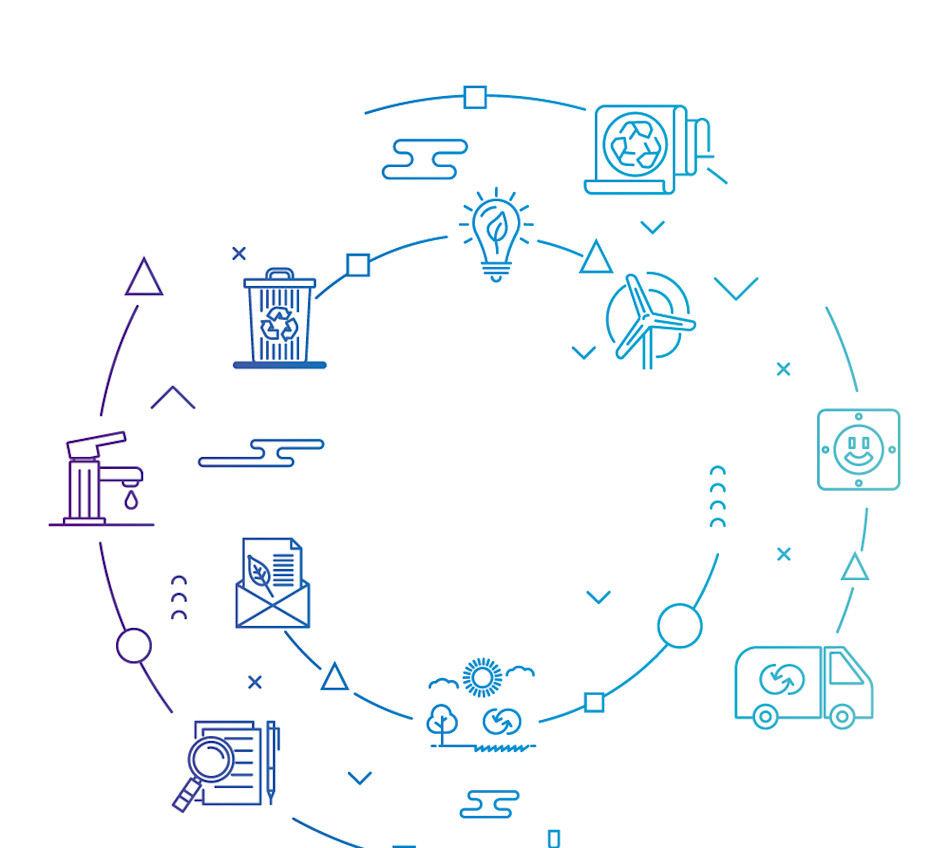Understanding the difference between energy frugality and energy efficiency
War in Ukraine, energy crisis, climate imbalance… We’re living through a period of unprecedented turmoil. It calls for actions that are both immediate and ambitious for the future. Energy frugality and efficiency, complementary pillars of that response, should allow us to manage the emergency and lay the foundations for a sustainable future.

Energy frugality: the first defence against the current crises
As part of the national energy frugality plan, published on 6 October 2022, the French minister for energy transition stressed the extent of the challenge posed by the coming months. To deal with the impacts of the numerous current crises, the authorities and actors in the energy sector have already filled their gas stocks to the maximum over the summer, diversified their suppliers and increased methane terminal capacities. However, despite this early action, there is a need for every member of the public to play their part in limiting shortages and the risks of interruptions to energy supplies this winter.
And that is where energy frugality – which involves reducing energy consumption through fair and appropriate usage and pooling some usage as much as possible – really comes into its own. Generally these measures are quickly put in place and require little financial outlay. This change in the way we consume allows us choices in energy savings, rather than suffering outages being imposed on us. As a response to the current emergency, that frugality will also be one of the keys to our ecological transition and our energy sovereignty in the future.
The energy frugality plan: ambitions and means of action
Against the backdrop of the war in Ukraine and the energy crisis, the French government’s energy frugality plan aims to reduce national energy consumption by 10% over the next two years. In the longer term, the approach should also contribute to our targets for reducing greenhouse gas emissions.
To mobilise the whole population around this frugality objective, the government has rolled out a campaign to make them aware of things they can do every day to save energy. But businesses and local authorities also have some significant levers they can pull.
Reduce the temperature to which premises are heated. Each 1 °C reduction reduces the energy bill by an average of 7%.
Optimise usage times for energy-hungry equipment. In particular, turn off computers rather than leaving them on standby when they are not being used.
Exercise cooperative frugality, by pooling certain energy-hungry pieces of equipment or usage. One example would be to encourage employees to use public transport or car sharing.
To identify the levers for energy frugality best suited to its activities, an organisation needs a clear picture of its consumption. A digital tool such as IO-Base® enables data to be collected from all production sites and to view it in real time, giving the means to adjust consumption to match needs more closely.
From energy frugality to efficiency: the 2050 target
Looking beyond frugality measures, helping to deaden the most immediate impacts of the current crises, France set itself even more ambitious targets at COP21: to reduce national energy consumption by 50% by 2050.
To do that, the main lever would be energy efficiency, which means using better-performing equipment and processes, in order to reduce energy consumption while still providing an identical level of service.
Levers for energy efficiency:
Green building: aim for energy optimisation at every stage upstream and downstream of a product’s use, such as its manufacture, transport and recycling.
Bio-adaptive efficiency: using passive means of saving energy, such as insulating housing.
Equipment efficiency: using devices that offer good operational performance for the lowest possible energy consumption.
Energy optimisation: optimising consumption by reducing it and favouring renewable and less carbon-heavy energy sources.
Production system efficiency: take advantage of multi-energy grids to reduce energy losses (or unavoidable energy) which can often arise in certain industrial processes, and to recover that energy for other uses. That could be done, for example, by turning waste into energy using a methanisation process.
Digital for efficiency: drawing on the gathering and analysis of data to understand your energy consumption and the means of optimising it.
With energy efficiency, it is therefore no longer simply a question of restricting your use to limit your energy consumption, but of including the energy problem in all performance levers from the design stage through to everyday process implementation.
